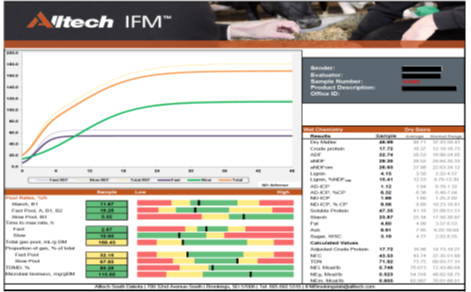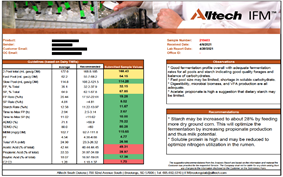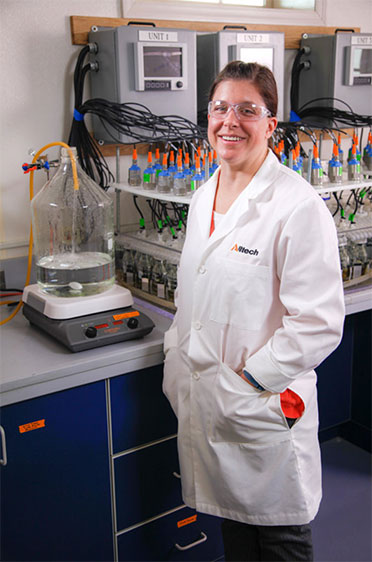The following is an edited transcript of Luther Andal's interview with Dr. Aman Sayed, managing director of Alltech India and regional director of Alltech South Asia.
Click below to hear the full interview:
Luther: Dr. Aman Sayed is managing director of Alltech India and the company’s regional director for South Asia. Welcome.
Aman: Thank you.
Luther: Give us an overview of India as a country, as a culture and as a people.
Aman: Well, let me start with saying that India is going through a big transformation at this point in time. What is there in India, and why should the world look at India today? The biggest strategic asset that India has is the population today. After independence, for a few decades, people were considered a liability or burden. However, now, people are considered an asset and human capital. There are about 1.33 billion people in India. Over the next five to six years, we will be the most populated country in the world.
Looking at the demographics of the population, we are a young India today. The median age is 28, which is much lower compared to the rest of the world. This poses a great opportunity, I believe, to the rest of the world and is why they need to look at India. In a very short period, I would say that India will become a sought-after country for business because there is a readily available workforce of talented, educated people.
Luther: India is very diverse as a culture and in terms of language, and religion, and states — union territories. Can you just give us a little overview of that diversity?
Aman: We have about 29 states in India and seven union territories. There are 22 official languages, but there are more than 1,000 dialects and more than seven religions. But we live together in great harmony. It’s important to understand that every state, in a way, acts like a different country. So, understanding the Indian culture for an outsider is quite important.
We live together all in harmony, despite being of different religions and different languages. But, again, the country brings everybody together. Though the national language is Hindu, most of the people speak English, which is another great asset for us. I have no doubt in a decade, India will be the number one English-speaking country in the world.
Luther: Right now, they’re number two.
Aman: They are. Yeah.
Luther: Tell us a little bit about the Indian economy. How fast is it growing? Maybe give us the breakdown of gross domestic product (GDP) at a high level.
Aman: Since gaining independence, we have grown at a rate of about 3 and 3.5 percent for about 40 to 50 years. But since a transformation in 2002, we have started growing at 78 percent, and we are now the fastest-growing country in the world in terms of economy. As far as the GDP, we are about $8.7 trillion today — third in the world. So, we have a significant contribution from the services sector, followed by the agriculture and the industrial sectors. We have surpassed China in GDP growth. And that’s one of the reasons why the world is looking at us today.
Luther: One of the fascinating things that you brought up was the new way that India looks at its people as a resource and as capital. That’s a big transformation, and it’s been part of the growth of the economy. Correct?
Aman: That’s right. And people are educated now. People are talented and they are readily available for the rest of the world. I believe that with the changes to immigration laws across the world, it will be time for the other countries to operate within India and export products, rather than the Indian workforce.
The number of talented people keeps growing, and the rest of the world will have to confront the fact that, in the future, their top management team is likely to come from India. The growth is coming from India — a generation in India — and they are really talented.
Luther: So, in terms of that resource capital, since around 2002, as you said, a lot of that has been some outsourcing IT, but you’re talking also about the development inside of India — of companies, startups and other areas. Correct?
Aman: That’s right. India is the number three country in the world in terms of startups. There are more than 4,200 startup companies in India. And they are all looking for help. And that’s something that the rest of the world needs to look at and consider investing in and trying to help. We know that more than 90 percent of startup companies fail — but why not look at those remaining 10 percent in terms of how we could assist in bringing their innovation and disruption to the world?
Luther: When we talk about the Indian economy — we’ve talked about trends toward education, toward technology — and diversity is obviously a part of it. What about the trends toward urbanization in India?
Aman: Today in India, there are about 630,000 villages. Seventy percent of India is rural, and there is constant migration from the rural villages to larger cities in India. Two out of every five Indians are migrants. So, that brings a significant opportunity for those companies that are a part of the rural economy, as well as those who consider the cities. This migration will continue until 2050. Why is this migration there? There’s migration because of education; to get better work. This is going to continue for a few decades, and it’s something one should consider in terms of the opportunities and where the human capital is.
Luther: We’ve seen a lot of changes in India. What about food? Have there been changes in preferences or taste palate in India as these changes have occurred?
Aman: Well, as you know, they say that Indian food is probably the best-tasting food in the world. During the last fiscal year, we produced record food gains. But it would still be fair to say that we are a hungry India, even today. There are a lot of reforms required, whether they’re for the prevention of wastage, better processing technologies and so on. We have a big population that is anemic. We have a very big population that is underweight and undernourished. So, there is an opportunity for companies in the food sector to come to India and explore which part of the supply chain they could help and assist and at the same time do business.
Luther: Well, following up on that point of agriculture, what’s going on with agriculture in India today?
Aman: Well, let me start by saying that, for an agriculture farmer today, the land holding is quite low compared to other countries. Each farmer holds a plot size of about 1.2 hectares. So, that poses challenges. But having said that, the Indian farmer is going digital. That digitization has transformed — and continues to transform — the agriculture industry.
Today, we have a situation in which, because of smartphones — even though the farmer’s literacy rate is very low — they are able to use the smartphones effectively. They are able to buy seeds through WhatsApp, for example. They are able to see the market price for their produce, whereas previously they would have taken produce to market to be sold for the going rate that day. Now they know the market price beforehand.
So, the digitalization in agriculture is increasing and improving. There are primary banks that have now gone into rural India. Financial literacy is also improving for the farmers, which is great. Indian farmers were previously prey to money lenders, who charged 40 to 50 percent interest rates. Now that has changed. So, it’s a great opportunity, I think, for agri-finance companies that are into improving the yield or into processing. There are significant foreign direct investment benefits provided to foreign companies by the Indian government, particularly in the food retail side of things.
Luther: How important is the dairy industry to India?
Aman: India is the number one milk producer in the world. We have lots of cows — about 300 million. You may say the yield is low, but we are getting better. We are improving our genetics. We are improving our nutrition. It’s a great opportunity, even for countries outside India.
In another decade, we will need about 200 million metric tons of milk. Is that milk going to come from India? Probably not. We may have to import milk in India from other parts of the world. The only question is: Are the countries outside India willing to export milk to India in that situation? We are going to need a lot of milk. Coming back to your question on the dairy sector, there is about 4 percent total growth every year. The milk products are growing at a rate of 20 to 25 percent, whether it’s cheese, butter, ghee — all of those. So, it’s a big transformation happening in the dairy sector as well.
Luther: We’ve covered the fact that India has an educated workforce, that they have a lot of experience with technology, certifications that are necessary for outsourcing, but also the fact that they are growing startup-wise and have a lot to offer. What other advantages do they offer the world?
Aman: Well, I think the biggest advantage is the talent and the IT sector, which is growing at a rate of 14 percent. You see, there is a lot of high-information technology and the business process outsourcing (BPO) side of things, which is growing and significantly contributing to the Indian GDP. Indians have a 67 percent market share of IT revenue. So, in the “Silicon Valley of India” — which is Bangalore — you have a lot of IT. And, as I said earlier, with the changes in immigration laws, I think it is important for countries to go to India and hire those talented people, and work with them, and get the best out of it. So, I see that as a significant impact.
Luther: Can you give us a little history on Alltech in India?
Aman: You know, Dr. Pearse Lyons had the dream to go to India. It was in the late 1990s. And in 2001, when we set up Alltech India, we disrupted the technology and the traditional method of feeding trace minerals in India, whether it was within the poultry, dairy or aquaculture industries. Today, Alltech has 30 percent of the market share in terms of the minerals. On the dairy front, we have disrupted the traditional method of testing the feedstuff by introducing the Alltech® In Vitro Fermentation Model (IFM).
Now, the dairy producers look to Alltech India to help redefine the nutrition and provide better nutrition and improve the efficiency for the cows. Overall, it’s a profitable situation for the farmer. And now, after having registered Alltech Crop Science, we are looking at disrupting the fertilizer market as India moves toward organic farming. So, I think that’s what we contribute to the industry — what Alltech contributes to the industry — that’s quite significant.
Luther: The term “rising billions” has been widely discussed. It is the emergence of markets in India and people in India, China, Africa and other areas of Asia that are moving up and coming into a middle class, coming into a workforce, becoming urbanized. Can you just discuss with us, as Alltech does their work in India, how important it is for the future of India in terms of feeding the country themselves and in general meeting the demands of the future?
Aman: You pointed out, very rightly, the rising billions. In the first 50 years of independence, our economy grew at just about 3 percent. We had the spike of 5 percent once or twice, but it wasn’t stable. So, it took almost 45 years or so for India to double its per capita income. Now there is a 7 percent growth in the economy — which is likely to reach double digits, growth in population of about 1.5 percent, and every Indian will double their per capita income in about eight to nine years — in even less time — four to five years — in urban areas So, you are right. A billion people are growing through prosperity. The only question is for the rest of the world: Would you like to be a part of this prosperity?
India today is at a stage of fast forward. The question to the rest of the world is: Would you like to be a part of this journey? And Alltech India is strategically placed to work with those farmers. When you said, “the middle class,” more than 50 percent of Indians belong to this segment today. And many of them have the desire and the dream to prosper in their life through dairy farming, through fish farming, through aquaculture —fish farming and shrimp farming. So, we are rightly placed at Alltech India to work with those farmers and be a part of their prosperity.
Luther: So, what does the future hold for India? Can you summarize that? What do you see? Where are we going?
Aman: I have no doubt that in 2040, India will be a superpower. The only question for the rest of the world is: Would you like to be a part of this successful ship named India?
Luther: What do you enjoy most about your job?
Aman: I love to meet people. I love traveling. The most enjoyable part for me is interaction with my team, which is great. Let me also tell you, that is quite unusual in the marketplace. The attrition rate in India today is about 20 percent in most workforce segments, including IT. However, in Alltech India, you will be surprised to know that for the sales team, our attrition rate has been zero for the last 18 months — quite unusual.
Luther: Dr. Aman Sayed is managing director of Alltech India and the company’s regional director for South Asia. Thank you for joining me.
Aman: Thank you very much.
Aman Sayed spoke at ONE: The Alltech Ideas Conference (ONE17). To hear more talks from the conference, sign up for the Alltech Idea Lab.
































